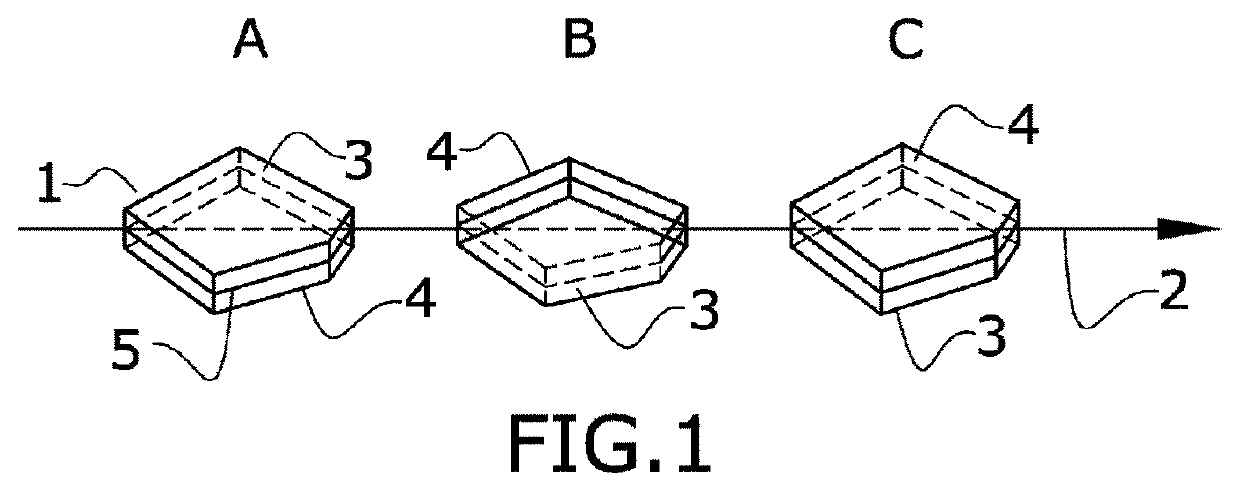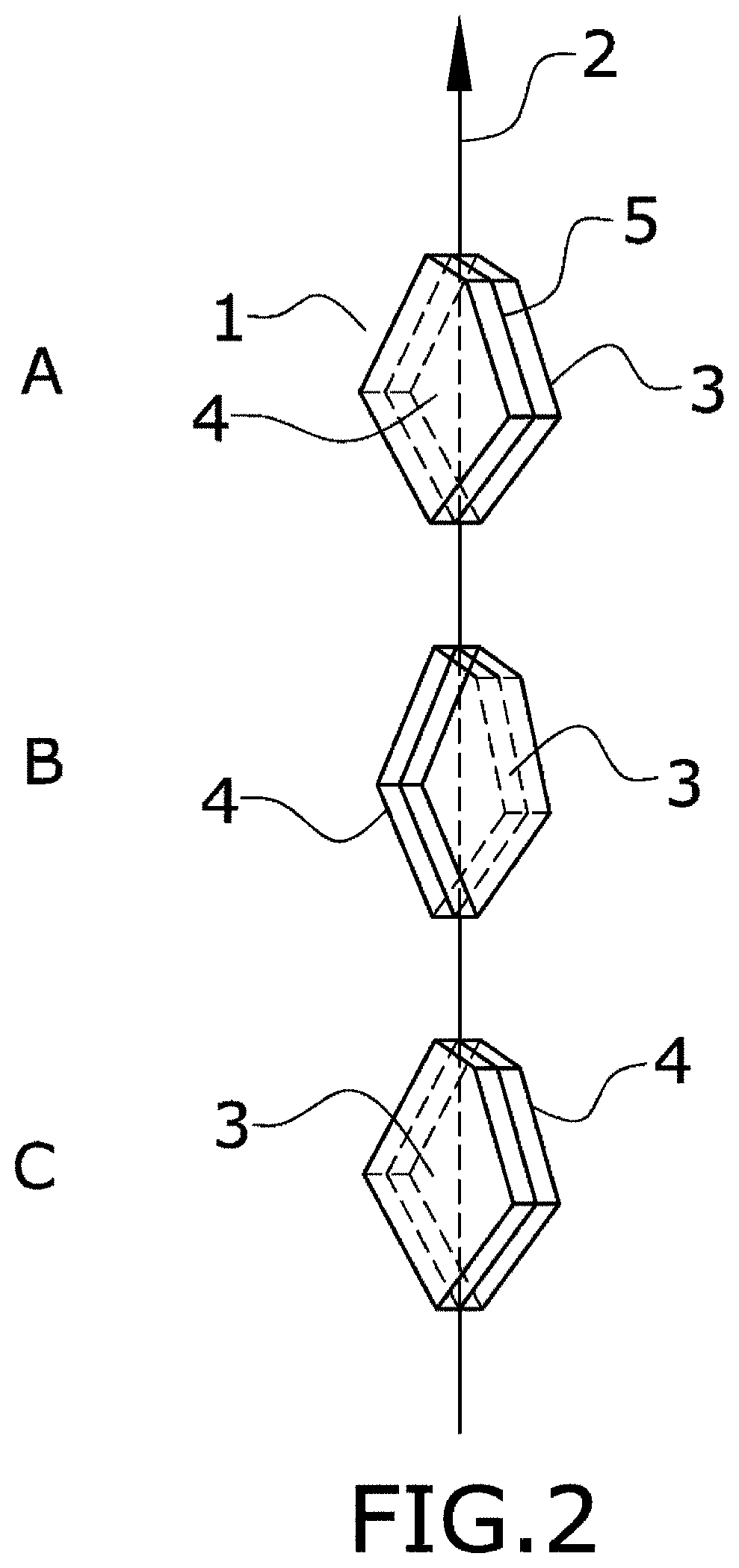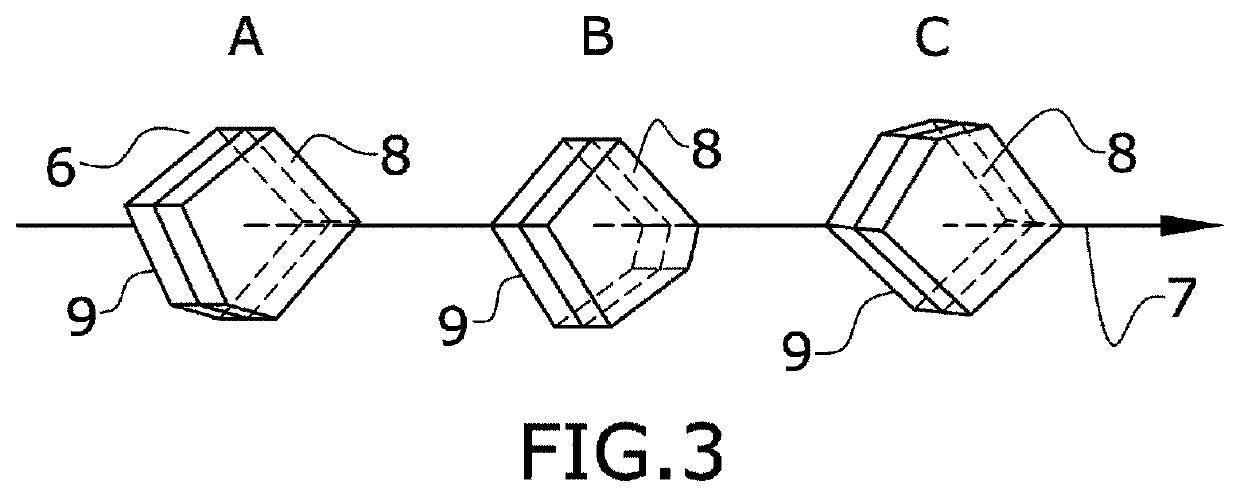Optical effect pigment
a technology of effect pigments and optical effects, applied in the field of effect pigments, can solve the problems of weakened effect pigment security potential, and the position that prior art magnetic effect pigments on printed substrates cannot be controlled by magnetic fields, and achieve the effect of substantial production cost savings
- Summary
- Abstract
- Description
- Claims
- Application Information
AI Technical Summary
Benefits of technology
Problems solved by technology
Method used
Image
Examples
first embodiment
[0051]In a variant of the first embodiment, the effect pigment comprises a luminescent material which is added to the at least two dielectric layers (35a, 35b). Suitable luminescent materials are disclosed in WO 02 / 040599 A (FLEX PRODUCTS INC.) 23 May 2002. Addition of the luminescent material is made by the same deposition process that will be described hereinafter, by including the luminescent material together with the dielectric material in the target employed for the deposition. In a further variant, the luminescent material can be incorporated in the form of a luminescent layer added to each of the stacks of layers (31,32). Suitable materials for these layers are the same described in above-mentioned WO 02040599 A. The luminescent material is added according to the same process applicable to the other layers which will be referred hereinafter. The luminescent response may or may not be in the visible spectrum. In the latter case, the response must be detected using an appropri...
third embodiment
[0059]Magnetic layers (45) with reflector properties as incorporated to the third embodiment are obtained by sol-gel techniques described as follows in KRAUS, et al. Synthesis and magnetic properties of Ni—Al2o3 thin films. J. appl. phys. 1997, no. 82, p. 1189-1195. sol-gel layers are deposited from NiAl2O4 spinel precursors derived by mixing stoichiometric quantities of solutions prepared from nickel 2-ethylhexanoate and aluminum tri-sec-butoxide in 2-methoxyethanol. The nickel solution is prepared by mixing nickel 2-ethylhexanoate with 2-methoxyethanol in a molar ratio of 1:5, refluxing at 140° C. for 12 h, centrifuging, and decanting to produce a 0.6M solution. In a separate flask, aluminum tri-sec-butoxide is dissolved in 2-methoxyethanol in a molar ratio of 1:10 and refluxed for 30 min at 140° C. The volume is reduced by distillation at a temperature of 140° C. and 200 mm Hg. Acetic acid is then added to the aluminum precursor in a molar ratio of 7:1. This solution is stirred a...
PUM
| Property | Measurement | Unit |
|---|---|---|
| thickness | aaaaa | aaaaa |
| thickness | aaaaa | aaaaa |
| thickness | aaaaa | aaaaa |
Abstract
Description
Claims
Application Information
 Login to View More
Login to View More - R&D
- Intellectual Property
- Life Sciences
- Materials
- Tech Scout
- Unparalleled Data Quality
- Higher Quality Content
- 60% Fewer Hallucinations
Browse by: Latest US Patents, China's latest patents, Technical Efficacy Thesaurus, Application Domain, Technology Topic, Popular Technical Reports.
© 2025 PatSnap. All rights reserved.Legal|Privacy policy|Modern Slavery Act Transparency Statement|Sitemap|About US| Contact US: help@patsnap.com



